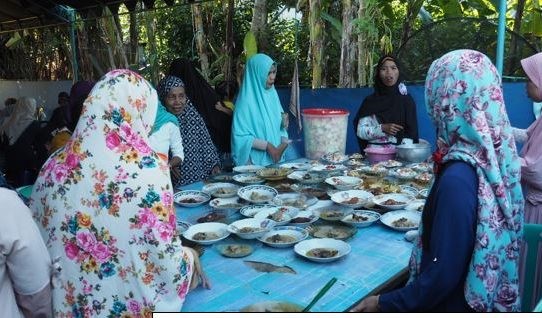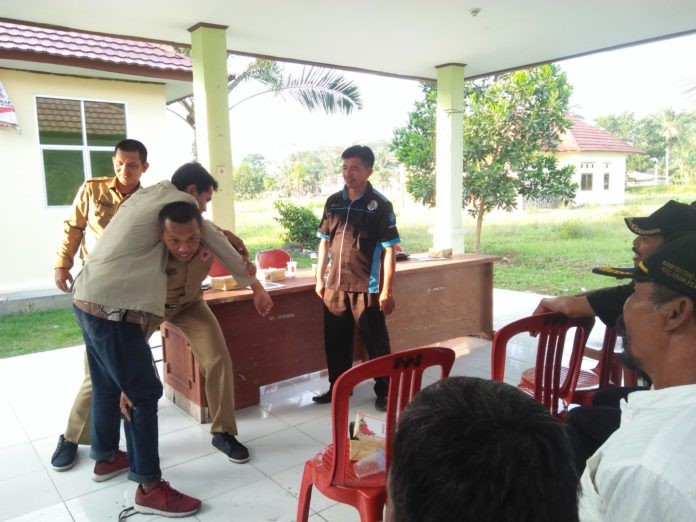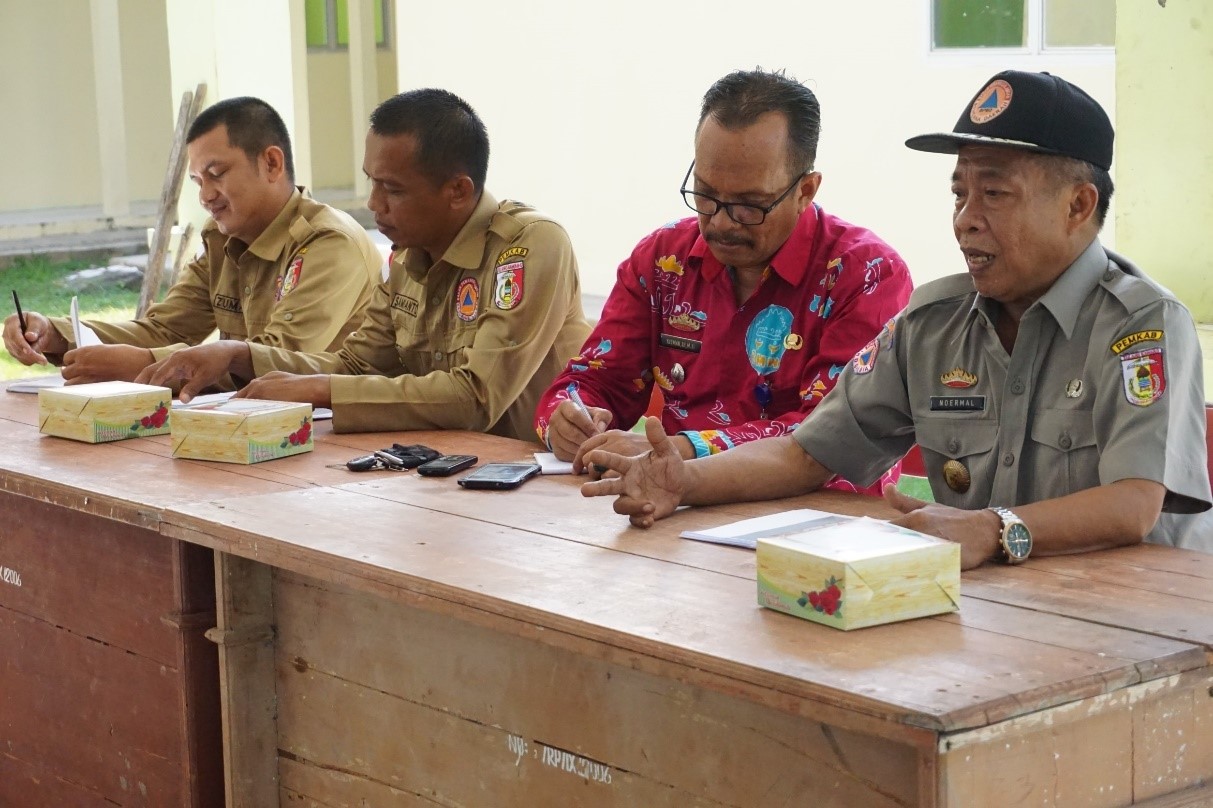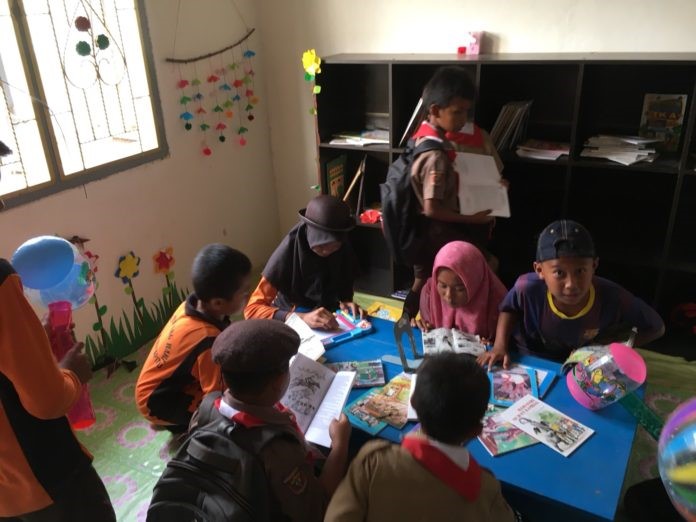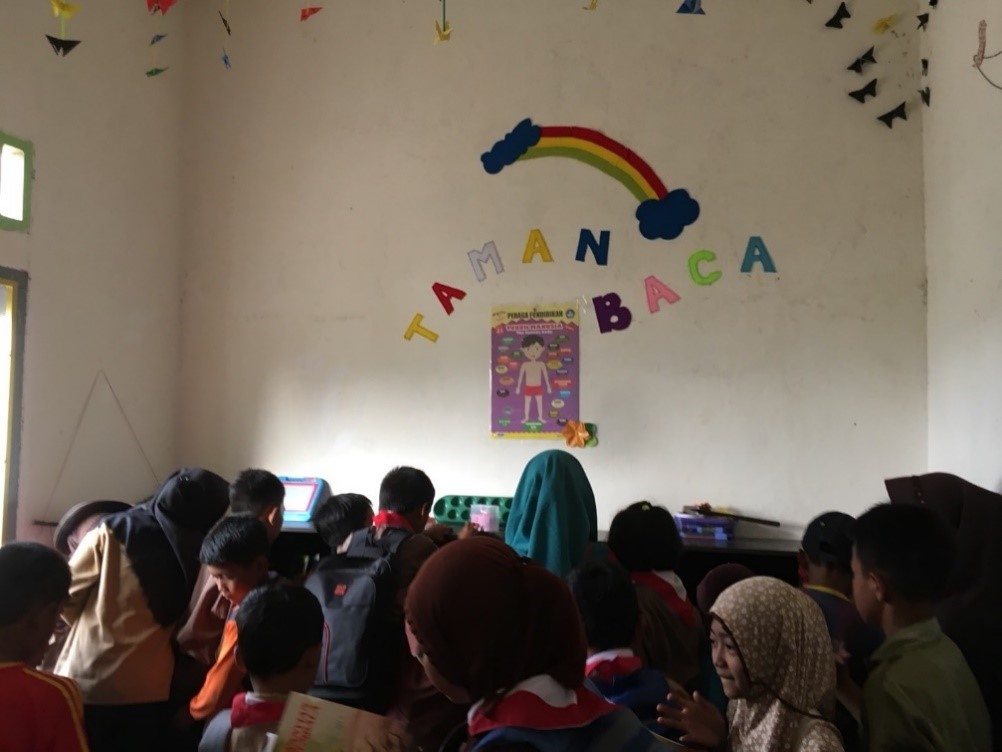
The Festival Anak Dawuhan (FAD) is an annual event held in Dawuhan Village, Sirampog District, Brebes Regency, Central Java, to celebrate National Children’s Day which is commemorated on July 23. This year, FAD took the theme “I and My Dreams” took place in the Semangkung field. FAD is held in collaboration with the UGM 2018 Community Service Program, the Dawuhan Children Forum (FORADA), and the Dawuhan Youth Organization. The implementation of FAD is a form of concern for children as the successor of the nation in the future.
FAD 2018 is divided into five main events, namely socialization of motivation to elementary school children, outbound competitions for grade 4 – 6 elementary school, coloring and drawing competitions for grade 1 – 3 elementary school students, volleyball competitions for junior high school students, and the creation stage as the closing of the FAD 2018 series of events.
Participants who participated in the FAD 2018 core event on Sunday (7/22/2018) were no less crowded than the previous year. FAD 2018 managed to attract the attention of more than 400 children in the village of Dawuhan.

Outbound participants totaling approximately 400 children were divided into 10 teams. Five game posts were prepared as the arena for each team’s match. The first game post was a ping-pong relay, each group was given 1 ping-pong ball and 10 pieces of bamboo that had been cleaved. In this game, all team members must arrange the movement of ping-pong balls through a split bamboo relay.
After reaching the finish line, the task of the participants is to put a ping pong ball into a plastic cup. The participant’s hand is not allowed to touch the ping pong ball. Don’t let the ping pong ball fall, if it falls it is declared a failure or must repeat again from the beginning. The team that reaches the finish is declared the winner first. Teamwork is needed in this game.

The second game post is dribbling a balloon using the stomach. Each team member was asked to pair up. After all pairing together, they must bring the balloon to the finish line using the stomach and keeping it from erupting and falling. Just like the provisions of the previous game post, participants who can bring the balloon to the finish line first become the winner. This game trains children’s agility.
Chained Hula Hoops

The third game is a chained hula hoops. Each group forms a large circle and holds hands. Hula hoop must be moved from the first participant to the last participant in a clockwise direction with the hand still holding. This game aims to stimulate a child’s gross motor skills.
Concentration Training
The next game post presents a game that trains children’s concentration. The opposite word is the name of this game post. In this game, each child in the group must do the opposite of what the guide said. When the guide says left, the participant must make a leap to the right as well as other reverse words such as up and down, and back and forth.
Participants who make a wrong move must get out of line. In addition, the game continues with adding instructions that when the guide says “one” then the participant must kick the right foot and when the guide says “two” then the participant must kick the left foot. The winner of this game is a group that can retain the most team members.

In this last post, it is guaranteed that all participants will not come out dry. Therefore, this post is called a waterproof post. Participants must bring water until the finish line uses a bottle that has been perforated. The team that managed to bring the most water was the winner.
Enthusiastic participants
On the other hand, coloring and drawing competitions at FAD 2018 did not lose the attention of the participants. The number of participants who participated in the coloring and drawing competition was unexpected. Participants in the coloring and drawing contest were grade 1 – 3 students at Dawuhan 01 Elementary School, Dawuhan 02 Elementary School, Dawuhan 03 Elementary School, and Shiratal Mustaqim Islamic Elementary School.
At 8 o’clock, participants gathered at Semangkung Square to attend the opening of FAD 2018. Participants were seen carrying study tables, colored pencils, stationery, and picture books. Coloring and drawing competition for FAD 2018 carries the theme of ideals. Participants are given the opportunity to color and draw various kinds of professions and the ideals they want to achieve. The door prize distribution added to the excitement of the event.
Volleyball Competition

FAD 2018 also presents a volleyball competition between junior high school students. The volleyball competition is held from 09.00 to 15.00. Despite playing in the hot sun, it did not dampen the spirit of the volleyball contestants to win the championship. Volleyball participants were very enthusiastic, this can be seen from the number of teams that registered and the enthusiasm of the supporters of each school that clashed with each other.
The volleyball competition was attended by 7 male teams and 5 women’s teams from 4 schools, namely Sirampog Junior High School (1 male team), Sirampog 4 Junior High School (1 male team), Sirampog 3 Muhammadiyah Middle School (2 female teams and 2 male teams), MTs Ma’arif NU 5 Sirampog (3 male teams and 3 women’s teams).
The men’s final match brought together volleyball teams from SMPN 3 Sirampog with Muhammadiyah 3 Middle School (team A). The match that took place during the two sets was won by the Sirampog Junior High School 3 team with a final score of 25-8 and 25-19. The struggle for third place brought together the MTs Ma’arif NU 5 team with SMP Muhammadiyah 3 (team B).
This match went on fiercely until the match lasted for 3 sets, which was won by the MTs Ma’arif NU 5 team with a final score of 25-8, 19-25, and 15-13. The women’s final match which presents A and B teams from Muhammadiyah 3 Middle School is also no less exciting. This match was won by team A with a final score of 27-25.

The previous celebrations was not only filled with various competitions, but also a cultural event featuring the Kaligiri Children’s Forum (Foragi). Foragi performed the Yamko Rambe Yamko and Ronggeng dances. Not to forget, the committee distributed door prizes to active participants and could answer questions raised by the MC.
In order to welcome National Children’s Day which fell on July 23, the participants also supported the campaign “Children Must Be Free from Violence and Bullying”. The hand stamp on the white cloth was used as a symbol of the participants’ support for the campaign.
The FAD event series was closed by throwing coloring powder simultaneously. According to Rara (11), a FAD participant, the activities held at FAD 2018 are new and exciting things for the children of Dawuhan village.

(Source: https://muda.kompas.id/2018/07/30/kemeriahan-perayaan-hari-anak-nasional-di-desa-dawuhan/; translator: Harun Ardiansyah)














